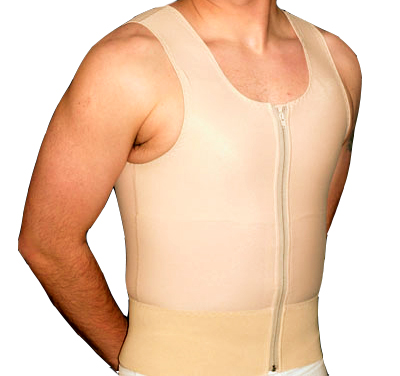Returning to Work
We understand that getting back to your daily routine is important, and you might be wondering when it’s safe to return to work. Here’s a simple guide:

Office or Desk Jobs: You can usually return to work the day after surgery. Before heading back to work, we recommend a quick follow-up visit to the clinic. The follow-up only takes about 20 minutes, ensuring your recovery is on track.

Physically Demanding Jobs: If your job involves physical labor, such as heavy lifting, operating machinery, or construction work, it's best to avoid strenuous activities for the first two weeks. This will help prevent any strain on the operated area and ensure a smooth recovery.

Exercise and Workouts: We encourage light physical activities to aid recovery. You can start leg workouts, light walking, or gentle jogging as early as a week after surgery. However, wait at least 4 weeks before resuming weightlifting or chest exercises. During the first month, avoid using your arms and chest too much to prevent complications.
Important Post-Op Care Tips

- Healthy Eating: Start with soft, gentle foods and avoid spicy or strong-tasting dishes. You can enjoy most foods, except for alcoholic beverages and overly salty meals.
- Avoid Smoking: Smoking can significantly delay the healing process and increase the risk of infection. This includes traditional cigarettes, e-cigarettes, hookah, and even exposure to secondhand smoke. Avoid smoking for at least 2 weeks post-surgery.
- Handling Fluid Leakage: It’s normal to experience a bit of fluid leakage during the first day. If this happens, replace the dressing with a sterile gauze. Make sure not to open the dressing point as the wound needs to stay protected from contamination.

- Compression Garment: Wearing your compression vest is crucial for your recovery. It prevents fluid accumulation, helps reduce swelling, and supports skin retraction. Wear it for 4 weeks—24 hours a day for the first 2 weeks, then 12 hours a day for the next 2 weeks.
- Showering and Bathing: You can take a shower 1 to 2 days after surgery with a waterproof band on the wound. For hot baths, saunas, or swimming, give your body 4 weeks to fully recover.
- Sponge Pad Care: If you were provided with a sponge pad, apply it around the areola for only 7 days. This helps with healing and provides gentle support.
What to Expect During Recovery
Your chest might appear asymmetrical, lumpy, swollen, or slightly dimpled. Don’t worry—this is a temporary phase that can last for 4 to 6 months. Light daily activities like walking can speed up recovery, but avoid lifting anything heavier than 40 pounds (about 18 kg) during the first week. It’s okay to roll luggage, but avoid lifting it.
- Massage and Stretching: After 2 weeks, start light massage and gentle stretching. The “Biobond (lumps)” under the skin may take 4 to 6 months to gradually decrease.
- Scarring: It’s normal to develop ‘Hypertrophic scars’ after chest surgery. Proper post-op care is essential to minimize their appearance.
When to Contact Us
our safety and comfort are our top priorities. Please reach out to us immediately if you experience any of the following symptoms within 3 to 4 days after surgery:
- Excessive pain
- High fever
- Yellowish discharge from the wound
- Persistent itching
We are here to support you every step of the way. If you have any questions or concerns, please do not hesitate to contact us. Your smooth and speedy recovery is our goal!
Sử dụng dải steri sau phẫu thuật gynecomastia
Tìm hiểu cách Steri-Strips giúp giảm sẹo và hỗ trợ chữa lành tối ưu sau phẫu thuật nữ tuyến vú. Nhận hướng dẫn và mẹo của chuyên gia từ Evita Clinic.
[FAQ] Béo phì ở trẻ em và gynecomastia
Nữ hóa tuyến vú ở tuổi vị thành niên ảnh hưởng đến 20–30% bé trai tuổi vị thành niên, với hầu hết các trường hợp tự khỏi trong vòng một năm. Tuy nhiên, khoảng 10% có thể bị phì to ngực dai dẳng do các yếu tố như béo phì, căng thẳng mãn tính và một số loại thuốc. Béo phì ở trẻ em, nếu không được giải quyết, thường tiếp tục đến tuổi trưởng thành và làm tăng khả năng nữ hóa tuyến vú. Hơn nữa, nghiên cứu cho thấy có tới 30% trường hợp có thể liên quan đến khuynh hướng di truyền, nhấn mạnh tầm quan trọng của các can thiệp lối sống sớm và nhận thức về tiền sử gia đình.
Bảo hiểm y tế Hàn Quốc áp dụng cho gynecomastia.
Nhiều người nước ngoài cư trú tại Hàn Quốc đã đăng ký Bảo hiểm Y tế Hàn Quốc. Trong trường hợp nữ hóa tuyến vú từ độ 2 trở lên, bảo hiểm y tế Hàn Quốc được áp dụng.
[FAQ] Bổ sung protein hoặc rượu có gây ra gynecomastia không?
Bổ sung protein cũng có thể là một trong một số nguyên nhân gây ra gynecomastia.
[FAQ] Về loại gynecomastia
Các cấp độ nữ hóa tuyến vú này hơi khác nhau ở mỗi người. Phương pháp phẫu thuật nên được lựa chọn tùy theo độ tuổi, khối lượng cơ bắp, thời gian phục hồi, lối sống và nhu cầu của bệnh nhân. Về vấn đề này, bạn sẽ tham khảo ý kiến của một chuyên gia và đưa ra quyết định.
[FAQ] Làm thế nào để tự chẩn đoán gynecomastia?
Bác sĩ Jeon giải thích cách tự chẩn đoán gynecomastia.

Leave A Comment
You must be logged in to post a comment.